The Activation Log is a new series that reports on my Parks on the Air (POTA) activations. These are write-ups that share additional content, thoughts, and images of portable operations that may or may not make it into a video.
(November 5, 2023) The Fox Cities Amateur Radio Club’s fall swapfest always has been a good time for me. It may be a smaller one, but often is quite productive in finding some ham radio goodies. Plus attending gives us a chance to do some shopping in Appleton, Wisconsin and get lunch at our favorite soul food restaurant, the Cozzy Corner.
If you want to know more about what we found at the hamfest, be sure to check out the video where I talk about all those goodies, especially the new rig that I picked up.
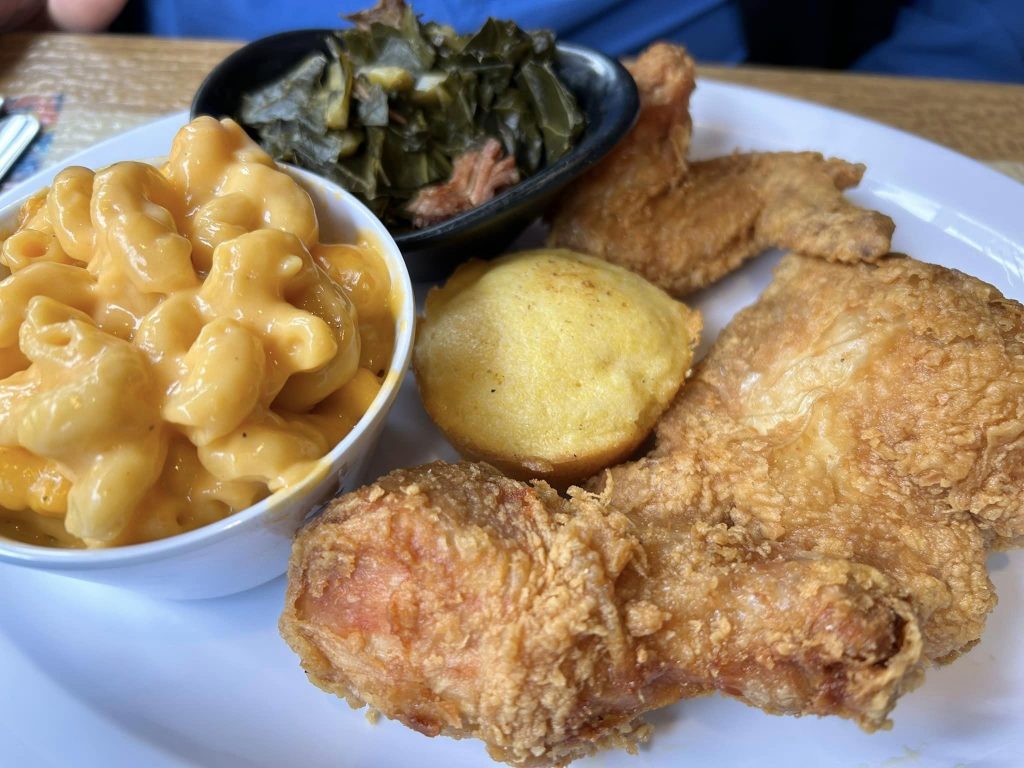
But during lunch of fried chicken and mac and cheese, our conversation turned to activating a park on the way home. It’s about a 90 minute drive home and we had a variety of routes to choose from. But the consensus was to pick a spot that I hadn’t activated before. Looking at the map, we settled on POTA K-8218, Hortonville Bog State Natural Area.
Hortonville Bog State Natural Area
In Wisconsin, there is a difference between state natural areas and state wildlife areas. Wildlife areas are easier to describe, they are formed expressly for the purpose of managing wildlife. This often means maintaining a habitat that promotes their growth. Hunting, fishing, and trapping are all permitted uses and wildlife areas boast of some of the best hunting lands in the state.
Natural areas are a bit different. They are set up to protect an often fragile ecosystem. Natural areas are often isolated, have no facilities, and may or may not have a developed trail system. Hunting and trapping may be allowed on a case by case basis, but it depends on the area and its purpose. Sometimes a natural area will be located within a wildlife area or a state park, offering you a two-fer. Its designation means that this is a special place.
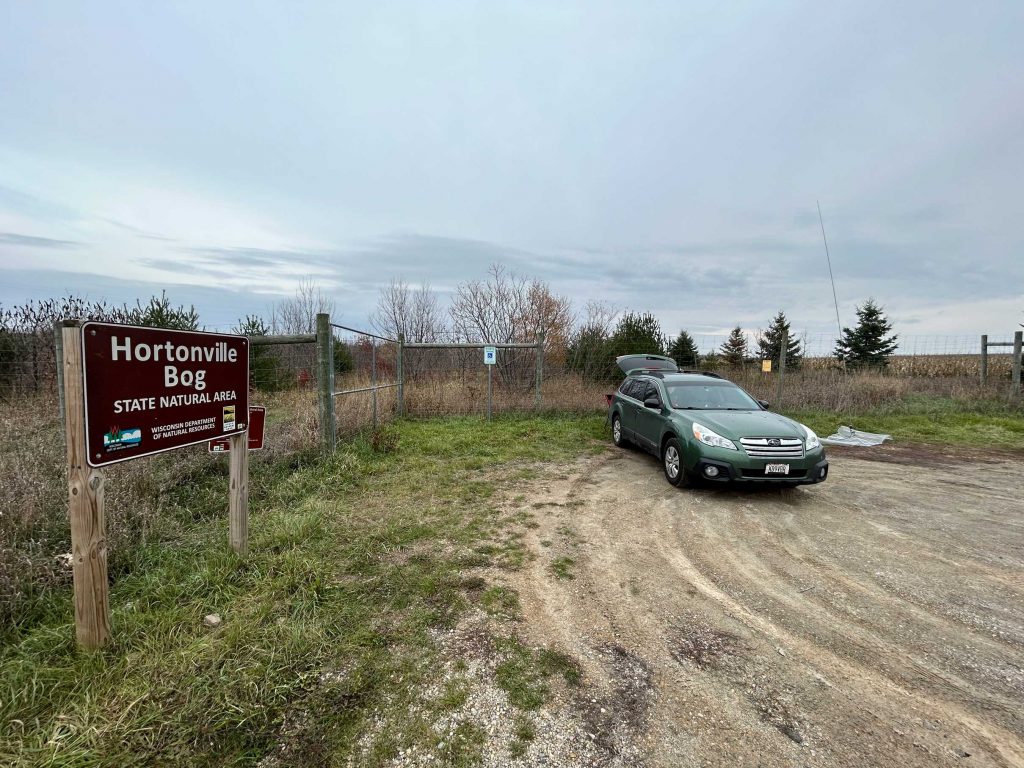
Hortonville Bog fits that description of a special place. Located between Hortonville and New London, Wisconsin, the natural area described by the DNR as: “One of the best bogs in southern Wisconsin and contains an open ericaceous bog with a very deep sphagnum layer. . . . Surrounding the bog is an advancing ring of tamarack and black spruce in all age and size classes. To the south is a wet-mesic forest dominated by tamarack and white cedar.” I wish we had more time to explore the bog, but it was getting later in the afternoon and we still had a bit of driving ahead of us.
I have this area planned to be a part of a large exploration and Parks on the Air activation, so stay tuned for that.
Setup
Setup was pretty straightforward at the park. The parking area is smallish, but offered plenty of room for a vertical antenna. The weather was about 50 degrees, so I felt comfortable operating out of the back end of the vehicle. This allowed Chris to remain in the passenger seat (otherwise I’d have to move her so I could set the radio on the dash and the logging computer on my lap). I had a folding chair with me, so in the back I went.
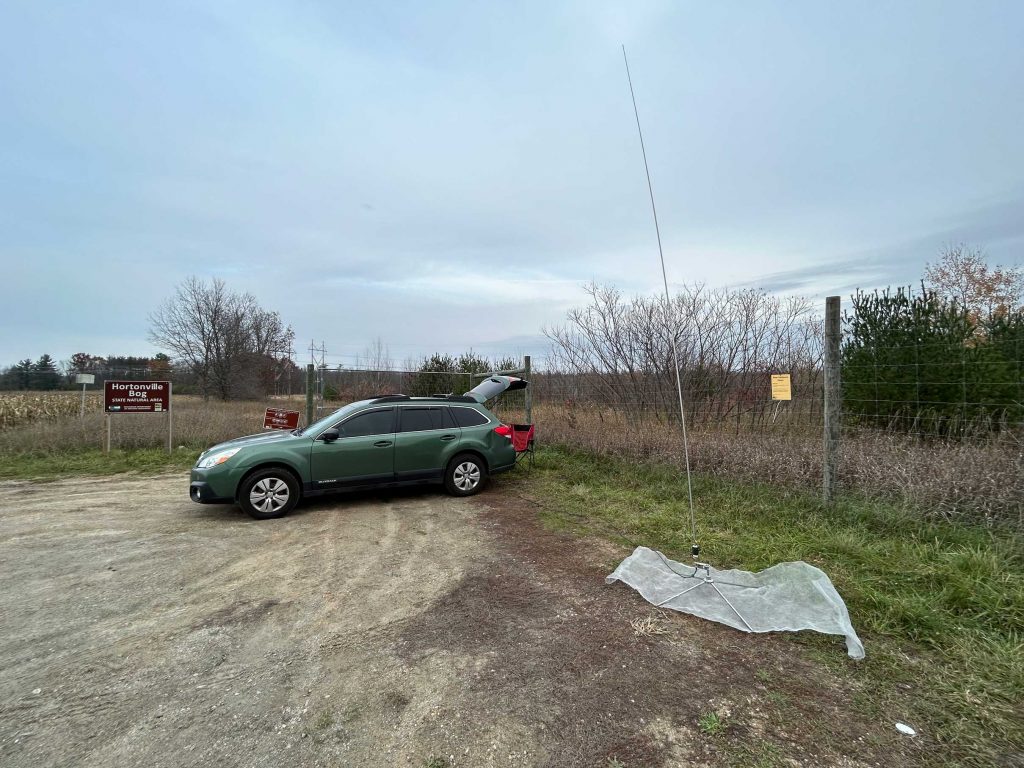
I set up my vertical antenna consisting of the window screen ground network, heavy flag base, jaw clamp, and 213 inch vertical antenna. I adjusted the antenna for the 20 meter band and connected it to the FT-891. Transmit power was set to 50 watts. I figured that I would run for about 20-30 minutes and see what got.
- Feather Flag Base: https://amzn.to/3MdepHE
- Wolf River Coils: https://www.wolfrivercoils.com/
- MFJ-1979 whip: https://amzn.to/3B9cehF
- Chameleon SS-17 Whip: https://chameleonantenna.com/shop-here/ols/products/cha-ss17
- Jaw Mount Antenna Clamp: https://amzn.to/3VL5Ir6
- SO-239 stud mount for jaw clamp: https://amzn.to/3VT1KwG
The Activation
As of late, 20 meters has been crazy. Getting on that band is like opening the flood gates. No sooner had I set up and found a clear frequency, I was off to the races. It always starts the same way. A single contact, usually a park to park cruising the band, and when you call QRZ a full on pile-up has gathered. This activation was no exception. The first person, N2OCK, got me started, then Don, WV1W, with his park to park, and after that it was pile-up city. I ran a pretty impressive rate, often netting 2-3 contacts a minute. Logging the first contact at 20:03 and ending at 20:32 UTC with Scott K1NEO, another regular or mine, I had managed to put 60 contacts in the log, 15 of them park to park.
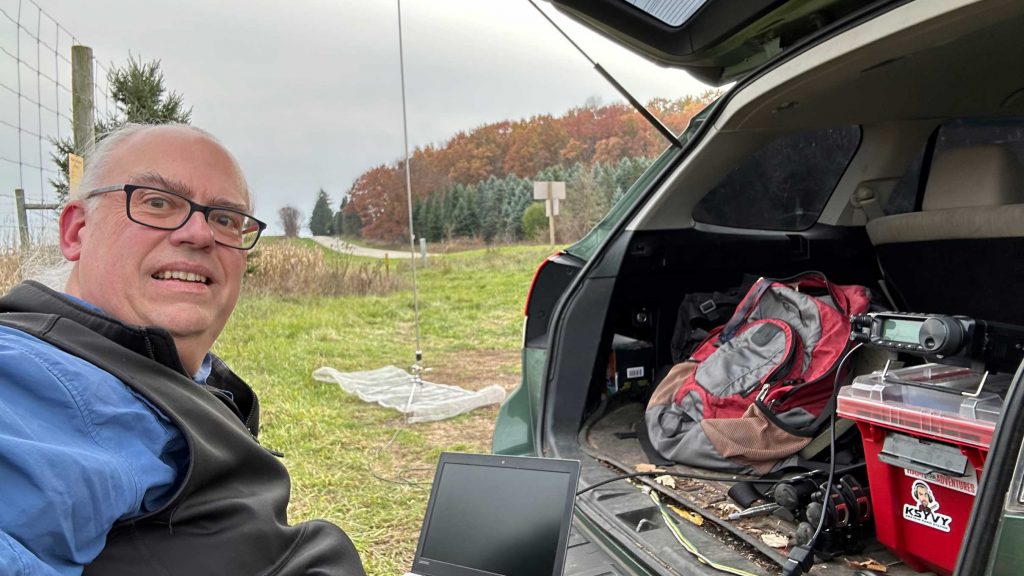
Conclusion
Band conditions were pretty decent, there wasn’t much short skip on 20 meters that day. But I think the rapid rate can be attributed this not being a seldom activated park (over 3,500 QSOs and counting) but the growing level of activity in the Parks on the Air program. Being at the peak of the solar cycle doesn’t hurt either. I’m to the point were if I want to avoid the pile up, I’m going to need to run QRP, and even at that I will have multiple stations calling me. But at least that makes getting me in their logs more of a challenge.
And speaking of QRP, dialing the power down can be a big equalizer. A large amplifier is handy in breaking the pileup, but it becomes less important in picking out those weaker stations. If you want to be a better hunting and get those QRP stations, work at improving your antenna system. In this regard that old adage of “if you can hear them, you can work them.” rings true.
With the addition of my new QRP rig (Yaesu FT-817nd) that I picked up at the hamfest. (watch the video above if you want to learn more about it), I’ll be doing a lot more low power activity. Partly for the challenge, but also to help equalize things between barefoot and QRO hunters.
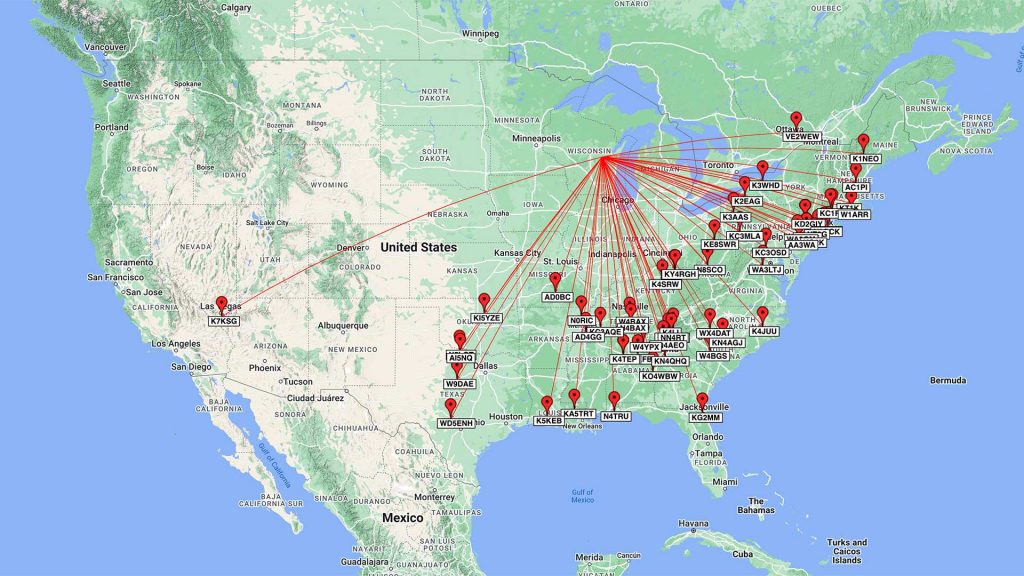
Contact map processing courtesy of qsomap.com
If you go
Hortonville Bog State Natural Area
1/2 mile north on Allcan Rd from County Hwy S
Outagamie County, Wisconsin
No vehicle admission required
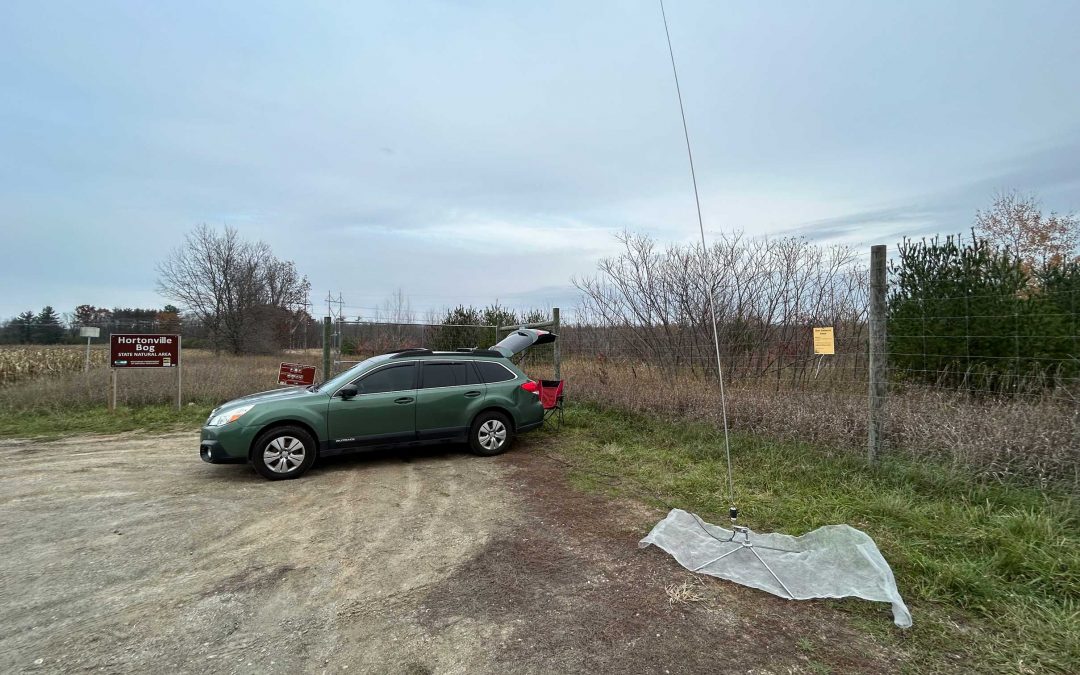
Recent Comments